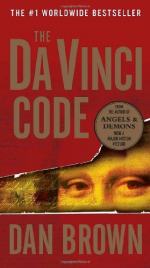|
This section contains 990 words (approx. 4 pages at 300 words per page) |

|
Facts in the Code
Summary: Though Brown's style of writing in The Da Vinci Code has been said to have minor flaws because of the way he presents his "facts", in reality it makes the story stronger.
Dan Brown's The Da Vinci Code, a fictional novel, was written in a factual manner. Brown took a controversial topic and created a written work of art. He used real organizations, real places, and even some real names. He also created fictional characters and places, but made no attempt to allow them to appear as such. Although the evidence used in this book was misconstrued, it played a key role in diverting the reader's attention away from his own thoughts and onto those of the author. Many Christians questioned their beliefs as they read; the faithful came out stronger than ever.
Brown took two strangers, brought them together and created the best mystery novel ever written. Robert Langdon, Harvard symbologist, and Sophie Neveu, an agent from DCPJ's cryptology department, were introduced by Sophie's murdered grandfather, Jacques Sauniere, through a code left for both of them to decipher. The...
|
This section contains 990 words (approx. 4 pages at 300 words per page) |

|


